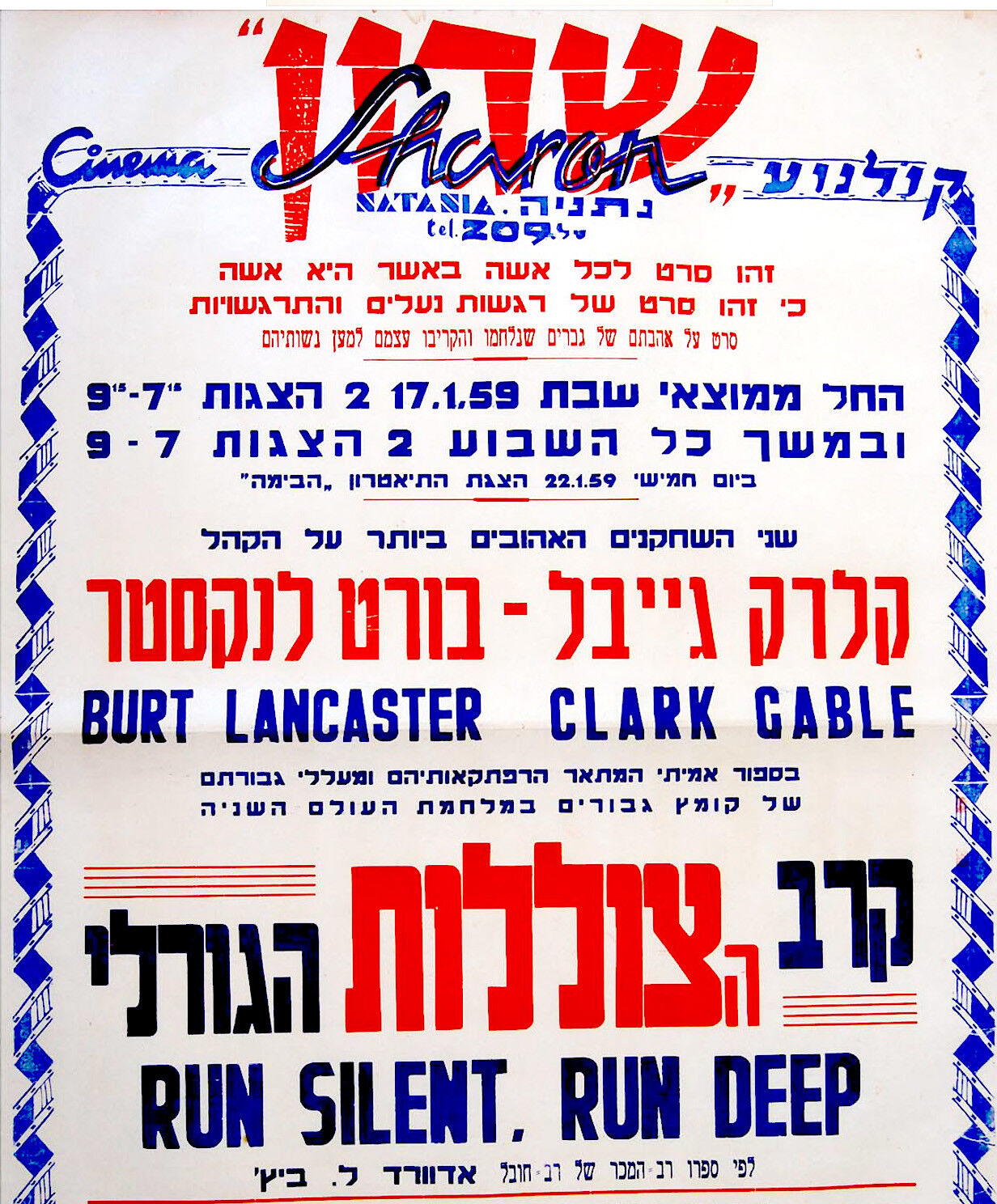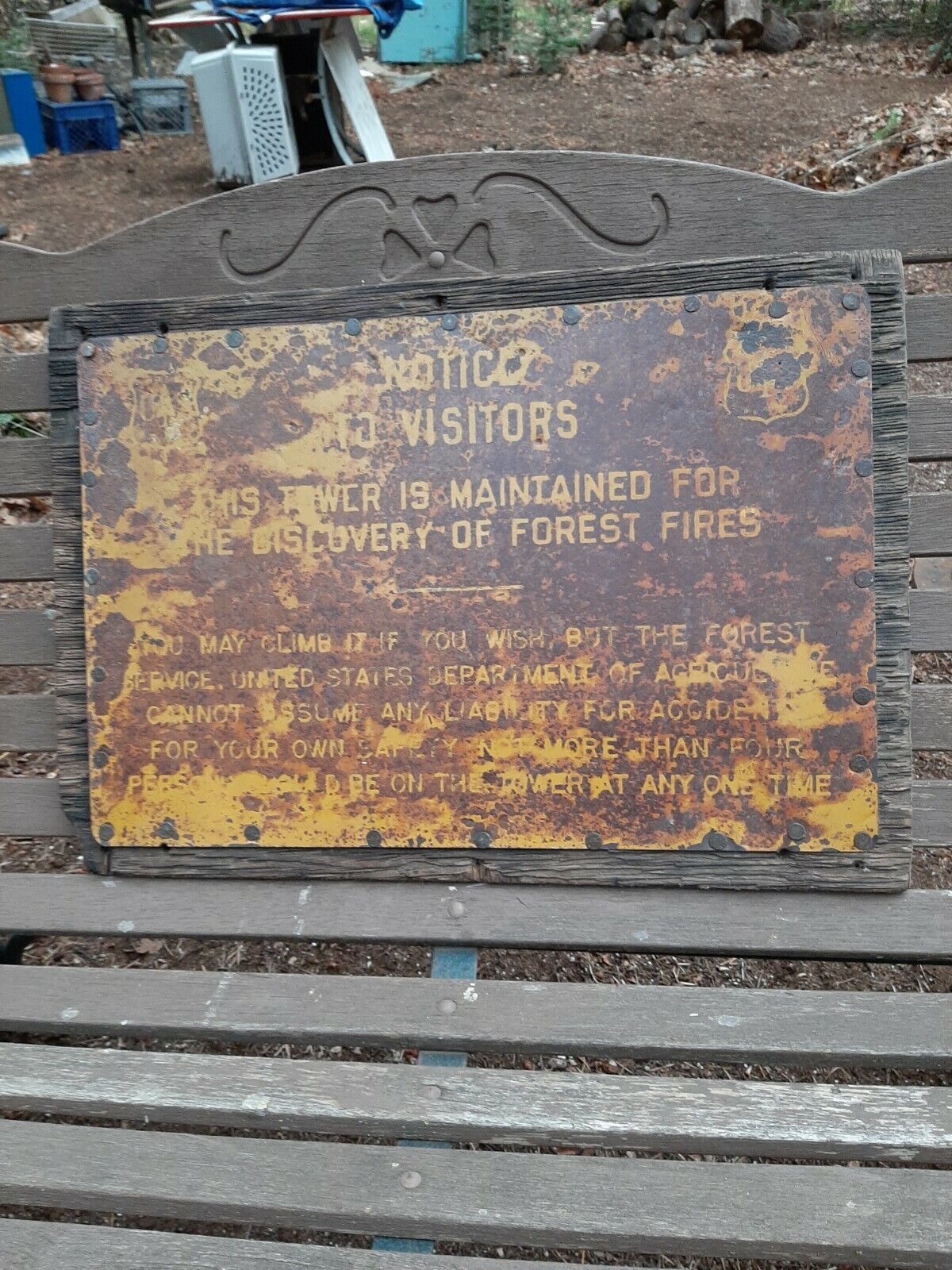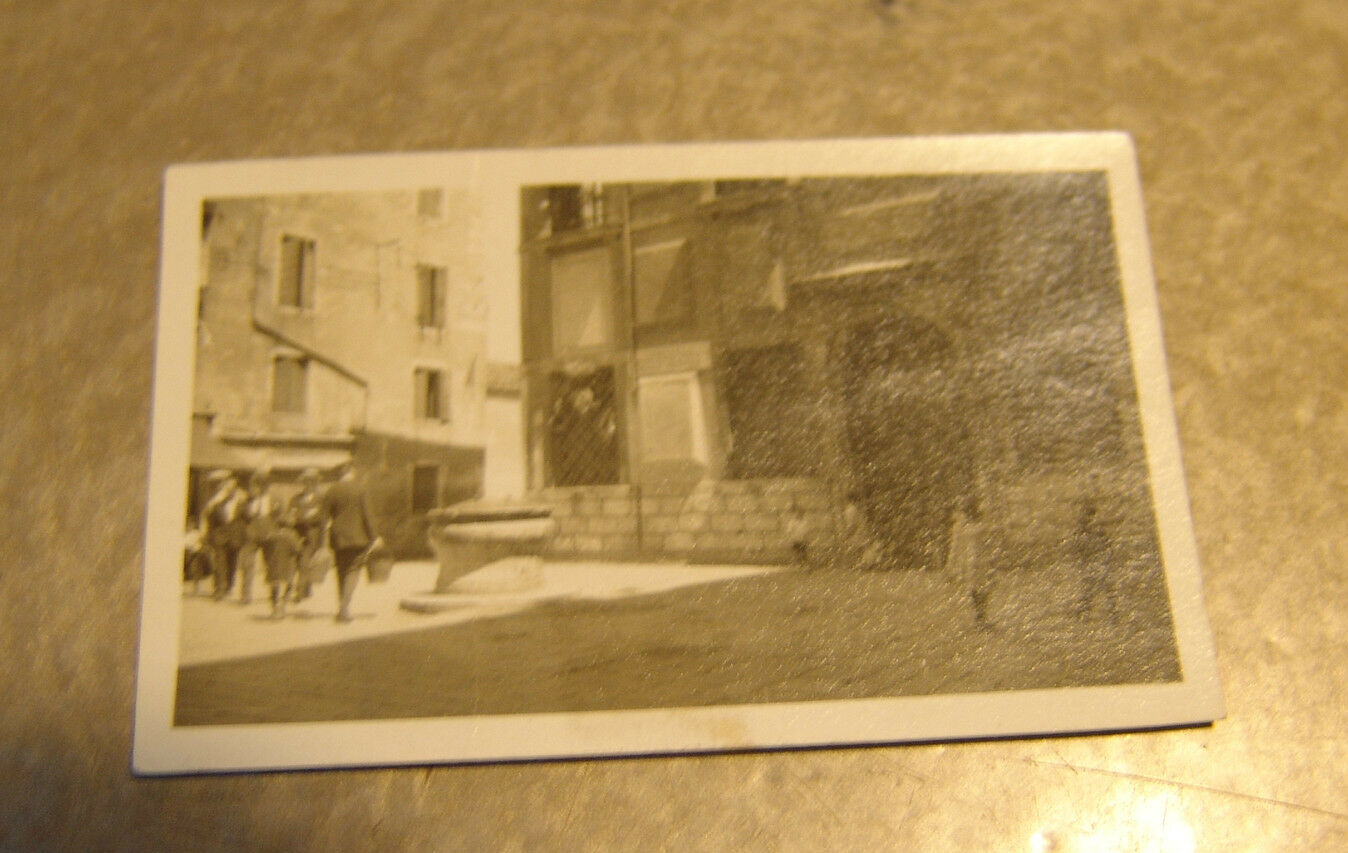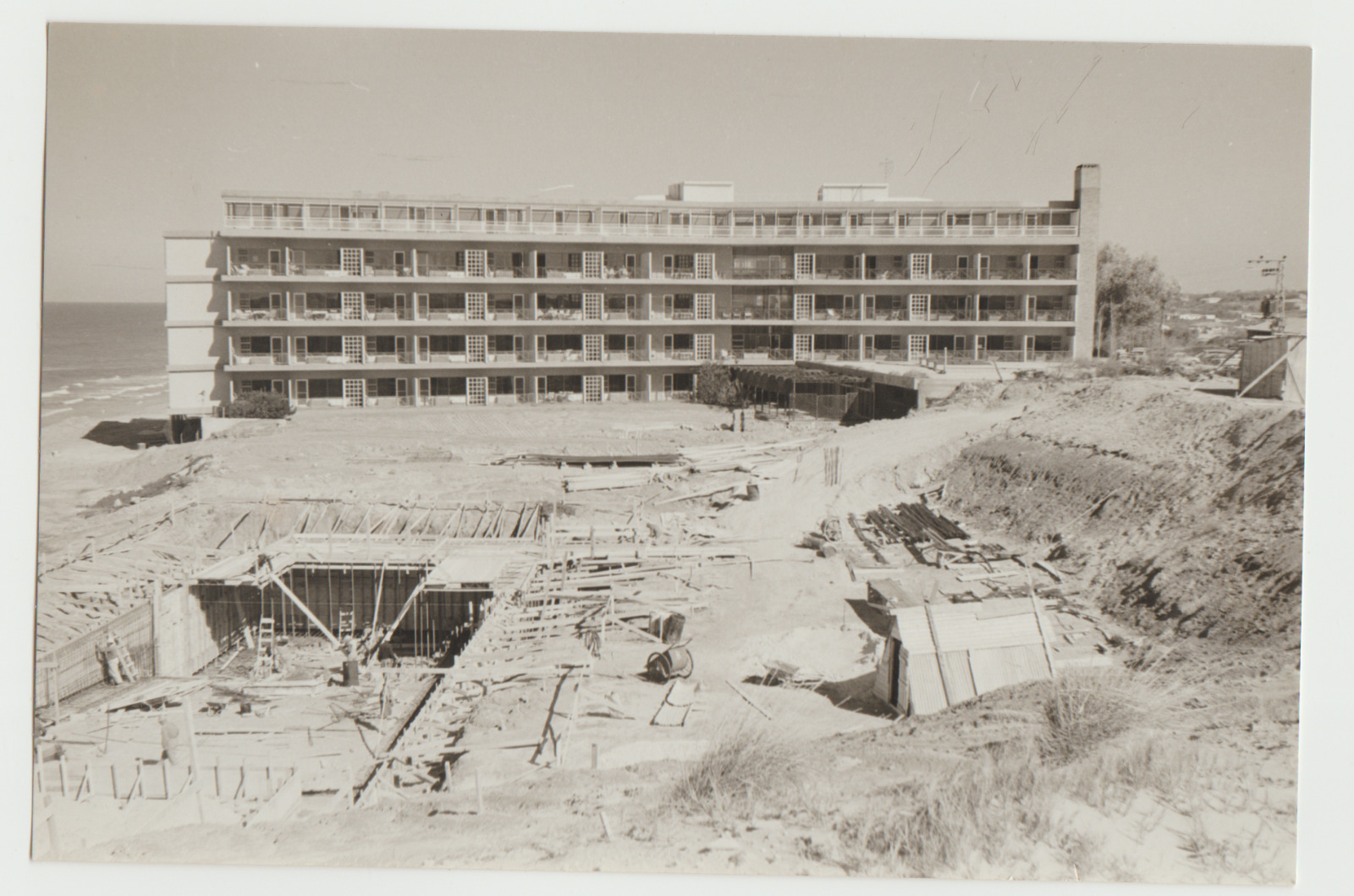-40%
1959 WW2 Movie RUN SILENT RUN DEEP Israel FILM POSTER Cinema GABLE & LANCASTER
$ 44.17
- Description
- Size Guide
Description
DESCRIPTION:
Here for sale is an over 50 years old EXCEPTIONALY RARE and ORIGINAL Jewish Judaica POSTER for the ISRAEL 1959 PREMIERE of the legendary SUBMARINS film "RUN SILENT, RUN DEEP" . Starrig among others : The great CLARK GABLE and BURT LANCASTER to name only a few, in the small rural town of NATHANYA in ISRAEL. The cinema-movie hall " CINEMA SHARON" A local Israeli version of "Cinema Paradiso" was printing manualy its own posters , And thus you can be certain that this surviving copy is ONE OF ITS KIND. Fully DATED January 1959 . Text in HEBREW and ENGLISH . Please note : This is NOT a re-release poster but a PREMIERE - FIRST RELEASE projection of the film , Right after its release in 1958 in USA and in Europe and worldwide . The ISRAELI distributors of the film have given it an INTERESTING and quite archaic and amusing advertising and promoting accompany text. . They named it " THE FATAL SUBMARINS BATTLE" . The somewhat archaic Hebrew text is : ".......The most 2 BELOVED ACTORS Clark Gable and Burt Lancaster.......The TRUE story which describes the ADVENTURES and ANNALS of a group of HEROES in WW2.....
"
. The poster also advertises the popular INDIAN film " The TEMPEST" in a matinnee show.
The condition is good . Folded once. Very slightly stained on top margins . GIANT size around 28" x 38" ( Not accurate ) . Printed in red and blue on white paper . ( Pls look at scan for accurate AS IS images ) Poster will be sent rolled in a special protective rigid sealed tube.
AUTHENTICITY
: This poster is guaranteed ORIGINAL from 1959 ( Fully dated ) , NOT a reprint or a recently made immitation. , It holds a life long GUARANTEE for its AUTHENTICITY and ORIGINALITY.
PAYMENTS
:
Payment method accepted : Paypal
& All credit cards
.
SHIPPMENT
:
SHIPP worldwide via registered airmail $ 25. Poster will be sent rolled in a special protective rigid sealed tube.
Handling around 5-10 days after payment.
Run Silent, Run Deep is a 1958 American black-and-white war film from United Artists, produced by Harold Hecht, directed by Robert Wise, and starring Clark Gable and Burt Lancaster. The film is based on the novel of the same name by Commander (later Captain) Edward L. Beach Jr.. The title refers to "silent running", a submarine stealth tactic. The story describes World War II submarine warfare in the Pacific Ocean, and deals with themes of vengeance, endurance, courage, loyalty, and honor and how these can be tested during wartime. In addition to Gable and Lancaster playing the leads, the film also features Jack Warden, as well as the film debut ofDon Rickles.[1] United Artists promoted Run Silent, Run Deep as a combination of the obsessiveness of Moby Dick's Captain Ahaband the shipboard rivalry found in Mutiny on the Bounty.[2] Capt. Beach, the author of the book, did not think highly of the film. He later said that the film company bought only the book title and was not interested in producing an accurate depiction of the theme and plot of his novel.[3] Contents [hide] 1 Plot 1.1 Adaptation from the novel 2 Cast 3 Production 4 Reception 5 References 6 External links Plot[edit] A World War II US Navy submarine officer, Commander P.J. Richardson (Clark Gable), has an obsession with aJapanese destroyer that has sunk three US submarines in the Bungo Straits, including his previous command. He persuades the Navy Board to give him a new submarine command with the provision that his executive officer, also known as the XO or the "exec", be someone who has just returned from active sea patrol. He single-mindedly trains the crew of his new boat, the USS Nerka, to return to the Bungo Straits and sink the destroyer, nicknamed Bungo Pete. Richardson's executive officer, Lieutenant Jim Bledsoe (Burt Lancaster), is worried about the safety of his boat and his crew. Bledsoe is also seething with resentment at Richardson and the Navy leadership for denying him command of the Nerka, which he believes should have been his. Richardson begins to drill the crew on a rapid bow shot, in which a submarine shoots "down the throat" (that is, at the bow of an approaching target) at a destroyer moving in for the kill, which is normally considered a desperation shot due to the extremely narrow profile of the target. He then bypasses one target only to take on a Japanese destroyer using a bow shot. The crew is outraged as it discovers that Richardson is avoiding legitimate targets in order to enter the Bungo Straits undetected in direct contradiction to his mission orders. Finally, they are confronted by a large convoy about 7,000 yards ahead. Soon after firing two torpedoes at one of the cargo ships, blowing it up, and then engaging Bungo Pete, they are attacked by aircraft that had been alerted to their presence and waiting in ambush. The submarine is forced to dive and barely escapes destruction from depth charges. Three of the crew are killed, and Richardson suffers an incapacitating skull fracture. The submarine also narrowly escapes what the crew mistakenly believes to be one of their own torpedoes doubling back on them. By sending up blankets, equipment, and the bodies of the dead, they convince the Japanese that the submarine has been sunk. Bledsoe uses Richardson's incapacitation to assume command and set course for Pearl Harbor. While listening to Tokyo Rose proclaiming the sinking of their boat, several crewmen feel mystified about how the Japanese are able to identify several of them by name. Bledsoe realizes that the Japanese have analyzed their floating trash, so he decides to turn that to his advantage. Since the Japanese believe the Nerka has sunk, he returns to the Bungo Straits to fight the destroyer Akikaze, which the submarine defeats, only to be subjected again to a mystery torpedo. Richardson deduces that it was not the Akikaze alone which had been destroying US submarines but a Japanese submarine working in concert with the destroyer. He orders the boat into a dive just seconds before a Japanese torpedo races by. The Nerka then forces its adversary to surface and destroys it, achieving the revenge that was Richardson's personal mission. Richardson then collapses on the bridge and dies from his head injury and is buried at sea. Adaptation from the novel[edit] Main article: Plot of the novel The film draws many plot elements from the novel, including Japanese gathering intelligence from the submarine's trash. One key difference is that the novel places Richardson ashore recovering from a broken leg and working on the torpedo exploder problem when Bledsoe dies in the sinking of USS Walrus, Richardson's first command. In the novel the conflict between Richardson and Bledsoe begins while they are reconditioning the old USS S-16 (SS-121) in the Naval Submarine Base New London. The mutinous attitudes of the crew are an extension of Bledsoe's earlier rebelliousness, while the film provides them with no comparable context. The film adds an action sequence in which Richardson commands his boat through a wild night of surface action against a Japanese convoy. At Gable's insistence, the film has Richardson taken seriously ill before being relieved of command so Gable would not be perceived as playing a less than dominant character.[2] In the film the Eel does not ram the Japanese lifeboats. The US Navy, which helped with the film's production, may have been concerned with reviving memories of a 1943 incident in which Dudley W. Morton was accused of shooting into lifeboats while commanding Wahoo. Cast[edit] Clark Gable as Commander P.J. "Rich" Richardson Burt Lancaster as Lieutenant Jim Bledsoe Jack Warden as Yeoman First-class "Kraut" Mueller Brad Dexter as Ensign Gerald Cartwright Don Rickles as Quartermaster 1st Class Ruby Nick Cravat as Russo Joe Maross as Chief Petty Officer Kohler Mary LaRoche as Laura Richardson Eddie Foy III as Larto Rudy Bond as Sonarman 1st Class Cullen Production[edit] The USS Redfish was used in many of the exterior scenes. Captain Rob Roy McGregor, who had commanded two fleet boats (Grouper and Sea Cat) during World War II, acted as the technical advisor.[citation needed] Nick Cravat, who starred with Lancaster in nine films, had a speaking part. This was rare for him, because his thick Brooklyn accent did not fit the historical dramas in which he often appeared.[4] Don Rickles made his film debut in a small role, and in his 2007 memoirs he recalled that during filming Gable would sometimes frustrate the filmmakers (including Lancaster, who was a financial investor in the film) by adhering to a strict 9-to-5 approach to the workday—he would reportedly stop working during the filming of major scenes. Later in his life, Lancaster publicly had nothing but praise and admiration for Gable, whom he described as a consummate professional.[citation needed] The film contains several accurate depictions of torpedo attacks being arranged with periscope sightings, range and bearing calculations, and use of a Torpedo Data Computer to achieve a shooting solution. On the surface, the Captain uses a Target Bearing Transmitter mounted on the bridge to acquire a target visually and mark its bearing input for the shooting party inside the conning tower. This depicted the preferred tactic of night surface attack, taking advantage of both the submarine's greater speed and maneuverability using its diesel engines, and the use of its SJ radar in making accurate range and bearing calculations, although with greater risk of being sunk by bombs and shell fire. The director, Robert Wise, had real submariners working with the cast until they could realistically depict the complexities of these torpedo attacks. Submarine veterans of World War II who viewed the film remarked on the accuracy of these scenes, and the scenes now provide modern-day audiences with a view of what life was like aboard World War II submarines.[citation needed] The special effects were completed by using miniatures, considered to be state-of-the-art in 1957, when the film was made.[citation needed] Reception[edit] Bosley Crowther, writing in the New York Times, called it "a straight tale of undersea adventure, all-male and all-submarine ... [that] has the hard, cold ring of truth", with "dangerous adventures [that] are severely, nail-bitingly tense" until "the ultimate showdown ... that keeps one forward on the chair." To the extent that the events depicted might appear hard to believe, he cited the credentials of the novel's author and noted that "they look more like the real thing in good old black-and-white."[5] One critic later summarized the plot after it had been replicated in other submarine films:[6] [T]he Executive Officer hates the Skipper and smolders valiantly in that compressed environment with the tacit complicity of the crew until the Old Man just plain old blows his stack and then we have a shouting match and, as is the way with guys, things get better and we outwit the [you supply it] lurking there beyond in the somber depths to sail home at last.... The Screen: Submarine Adventure; 'Run Silent, Run Deep' Begins Run Here Gable and Lancaster in Film at Victoria By BOSLEY CROWTHER Published: March 28, 1958 YOU have to like submarine pictures to like "Run Silent, Run Deep," the Hecht, Hill and Lancaster entry that arrived at the Victoria yesterday. For this is a submarine picture, every tense, exciting moment of the way—a straight tale of undersea adventure, all-male and all-submarine. But if you do like this sort of picture, this one should take you down deep. A better film about war beneath the ocean and about guys in the "silent service" has not been made. That is a sweeping statement, considering some of the good ones there have been, including the fairly recent "The Enemy Below." But this one, teased on a novel of the same title by Comdr. Edward L. Beach, a wartime submariner in the Pacific, has more than drama. It has the hard, cold ring of truth Commander Beach's story, prepared for the screen by John Gay, has been skillfully cleared for visual action, so that it doesn't waste movement, time or words. It doesn't take more than five minutes to get the submarine Nerka out of "Pearl," bound for the Bungo Strait, near the Japanese islands, and a duel with an enemy destroyer tagged Bungo Pete. And, more than a desperate intention, the submarine also confines a sharp rift between its new captain and its executive officer, who thinks he should have the job. There is the simple situation—a clear disharmony in the ship's command and a stubborn purpose on the part of the captain, which is regarded with dire misgiving by the crew. Tension is the key to the action, and as Mr. Gay has kept his script efficiently rigged for that quality, it is accomplished in the direction of Robert Wise. From the time the new captain hits the "squawk box" and let's it be known to the crew that this patrol is going to be unusual, it is in every detail, every word. The hard drills in diving and firing, the first calculated attack on an enemy convoy and its unsuspecting escort with torpedoes fired directly "down its throat," the coming onto station in Bungo and the first shattering tangle with Pete—all of these dangerous adventures are severely, nail-bitingly tense. And all of the fast, climactic business in which the captain is shorn of his command and the "exec" has to manage the ultimate showdown is the sort that keeps one forward on the chair. Credit Mr. Wise and the producer, Harold Hecht, for holding the film in the visibly crowded metal chambers of what really looks like a sub-marine. Except for those plausible actions that take place on the deck or bridge, all the drama occurs right in the vital and closely packed quarters of the boat. This means a lot is shot in close-up—most of the picture, indeed—which calls for superior acting. The picture has that, too. Clark Gable is fine as the captain—fierce, self-confident and self-contained—and Burt Lancaster is impressively punctilious as the troubled "exec." Jack Warden, Don Rickles and Joe Maross are shipshape as members of the crew and Brad Dexter is credible as an officer whose mouth is a little too big. Some of the things that happen may strike you as a bit far-fetched, but Commander Beach has reported their counterparts elsewhere as actual happenings in the cold, dark depths of the Pacific war. Somehow, they look more like the real thing in good old black-and-white. The Cast RUN SILENT, RUN DEEP, screenplay by John Gay; based on the novel by Comdr. Edward L. Beach; directed by Robert Wise; produced by Harold Hecht for Hecht. Hill and Lancaster; released by United Artists. At the Victoria. Running time: ninety-three minutes. Commander Richardson . . . . . Clark Gable Lieut. Jim Bledsoe . . . . . Burt Lancaster Mueller . . . . . Jack Warden Cartwright . . . . . Brad Dexter Ruby . . . . . Don Rickles Russo . . . . . Nick Cravat Kohler . . . . . Joe Maross Laura . . . . . Mary LaRoche Larto . . . . . Eddie Foy 3d RUN SILENT, RUN DEEP For all the restrictions they pose in terms of setting, submarine films have long been a popular sub-genre of the war movie. Their success continues to this day with such films as U-571 (2000) and K-19: The Widowmaker(2002). The confined space actually helps to heighten the sense of danger and tension, while the vessel's mission makes for exciting action sequences. And both of these aspects are exploited to great effect in Run Silent, Run Deep (1958). In a story that has echoes of Moby Dick, Clark Gable plays the captain of a submarine sunk by the Japanese during World War II who is given a chance to command another one after a year at a desk job. Focused almost entirely on revenge against the destroyer that sunk his previous vessel, he finds himself pitted against his second-in-command (Burt Lancaster) and facing a mutiny for putting his new crew in unnecessary danger. Lancaster's rise to the highest pinnacle of Hollywood fame enabled him to find projects and produce the films he wanted to make under the banner of his HHL production company. Typically, HHL would find the material and convince United Artists to finance and distribute the movies, but in this case, it was the studio that bought the property, a novel by 30-year naval officer Capt. Edward L. Beach. HHL was asked to develop it. Lancaster saw himself in the role of the daring executive officer who bucks the more conservative and hard-nosed commander. For that role, the company struck a one-picture deal with Clark Gable, who was no longer top box office but still one of the most enduring and popular stars of Hollywood. The relationship with Gable started out on rocky ground. Lancaster was younger and at the height of his critical and commercial powers. Gable, however, felt his less sympathetic role might be seen as secondary to his co-star, especially when he caught wind that Lancaster was doing some rewrites behind the back of the screenwriter HHL hired, John Gay. To make matters worse, Gable was put off by the chaos that typically attended HHL productions. Shortly before the start of production, Gable showed up for a 7:00 am meeting at the HHL offices and found the place locked up. He and his wife sat on the steps outside for ten minutes before Gay showed up. When Gay phoned Lancaster's producing partner Harold Hecht, he was told the meeting had been changed to 8:00 am. But no one had informed him or the star. "What kind of cheesy, crummy outfit is this?" Gable fumed. Gable needn't have worried. Run Silent, Run Deep turned out to be far more his picture than Lancaster's, with the driven, vengeful captain the more dramatically interesting character. As production began, he grew more congenial and relaxed, although he did throw a fit over the scene in which Lancaster wrests control of the ship away from him. Gable flat out refused to do it, and production was halted for two days. Finally Gay hit on the idea of having Gable's character receive a severe injury, requiring his second-in-command to take control without having to resort to mutiny. Satisfied with that solution, Gable returned to work and production proceeded smoothly. The producers took great pains to make everything about the story and setting authentic down to the last detail, including efforts to make the dialogue "real submarine talk," according to Lancaster. Even the combat incidents, Lancaster insisted, were taken from Navy archives. The comedian Don Rickles, cast as a crewmember, recalled that Lancaster took the technical aspects of the film very seriously, constantly asking questions about pieces of equipment and the sub's operation. The official premiere of the film was held April 1, 1958, aboard the submarine USS Perch for an invited audience of senior Navy officers. Critics praised the work of director Robert Wise, Oscar®-nominated for another picture that year, I Want to Live! (1958), and later a winner for West Side Story (1961) and The Sound of Music (1965). Even The New York Times's Bosley Crowther, who trashed the previous HHL productions Vera Cruz (1954) and Trapeze (1956), praised the performances here and said, "A better film about war beneath the ocean and about guys in the 'silent service' has not been made." Yet, despite its skill at weaving action with an intense personal drama and the audience appeal of its two stars, the picture was not a commercial smash and was overshadowed at the box office by another submarine movie that followed shortly after, Operation Petticoat (1959), a comedy teaming another established star, Cary Grant, with a younger actor on the rise, Tony Curtis. Run Silent, Run Deep cinematographer Russell Harlan also shot Petticoat, and editor George Boemler went on to cut a later submarine adventure, Voyage to the Bottom of the Sea (1961). Director: Robert Wise Producer: Harold Hecht Screenplay: John Gay, based on the novel by Edward L. Beach Cinematography: Russell Harlan Editing: George Boemler Art Direction: Edward Carrere Original Music: Franz Waxman Cast: Clark Gable (Commander Richardson), Burt Lancaster (Lieutenant Bledsoe), Jack Warden (Yeoman Mueller), Brad Dexter (Cartwright), Don Rickles (Ruby). BW-94m. Letterboxed. by Rob Nixon ebay1237















